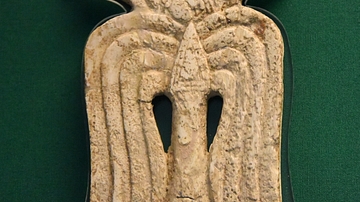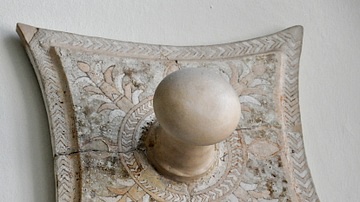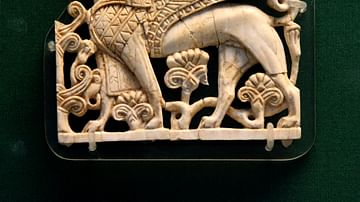Illustration
On the left is the naked infant Horus sitting on a lotus flower with his finger in his mouth. Facing him is a winged goddess, possibly Isis, who extends a lotus flower towards him. This fine piece was originally inlaid with colored glass or faience. Excavated by Sir Henry Layard; acquisition date 1848. Neo-Assyrian Period, 9th to 8th centuries BCE. From the doorway between Room V and W of the North-West Palace at Nimrud (ancient Kalhu), Mesopotamia, modern-day Iraq. (The British Museum, London).
About the Author
Cite This Work
APA Style
Amin, O. S. M. (2016, September 08). Nimrud Ivory Plaque of the Birth of Horus. World History Encyclopedia. Retrieved from https://www.worldhistory.org/image/5647/nimrud-ivory-plaque-of-the-birth-of-horus/
Chicago Style
Amin, Osama Shukir Muhammed. "Nimrud Ivory Plaque of the Birth of Horus." World History Encyclopedia. Last modified September 08, 2016. https://www.worldhistory.org/image/5647/nimrud-ivory-plaque-of-the-birth-of-horus/.
MLA Style
Amin, Osama Shukir Muhammed. "Nimrud Ivory Plaque of the Birth of Horus." World History Encyclopedia. World History Encyclopedia, 08 Sep 2016, https://www.worldhistory.org/image/5647/nimrud-ivory-plaque-of-the-birth-of-horus/. Web. 30 Jun 2025.








